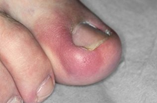
Ingrown toenails are a very common condition we see everyday in our practice, where the toenail digs into the skin. They can cause mild to moderate pain, and in some cases become infected and require antibiotics. Ingrown toenails may occur due to injury, poor fitting footwear, or may just simply be genetic. If you suspect you have an ingrown toenail, it is advisable not to try and cut the nail yourself, and instead make an appointment with the chiropodist/podiatrist. The podiatrist will assess your nail and outline the most suitable treatment. Depending on the severity this may entail writing a letter to your GP to request an antibiotic, or conservative management such as trimming the nail professionally and footwear advise. If these steps fail to cease the problem, a more permanent solution can be carried out know as nail surgery. In this procedure local anaesthetic is used to numb your toe and the problematic side of the nail is removed with the application of phenol to prevent the ingrown nail from coming back. It is a pain-free, successful and permanent solution to ingrown toenails. If you suspect you have an ingrown toenail, book a free 15 minute consultation where the podiatrist will assess and advise the most suitable treatment option for you.
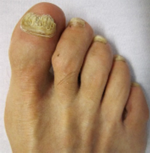
A fungal nail infection is a common condition of the toenails where they can become discoloured, thickened and crumbly. Nail fungus can often become unpleasant and difficult to treat. It happens when naturally occurring fungi on our skin multiplies and overgrows on the nails leading to an infection. The fungi thrive is warm, dark, moist environments like our feet. People most prone to fungal nail infections are runners, those who use communal areas, have a weakened immune system, or have conditions such as diabetes, heart disease or psoriasis. It is common to have fungal nails in association with fungal infection of the skin. Treatment for fungal nails usually includes the podiatrist filing the fungal nail down, followed by regular application of creams or ointments to kill the fungus. In some cases the GP may prescribe antifungal medication. If you suspect you have a fungal nail infection book appointment with the chiropodist/podiatrist.
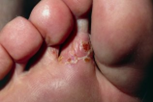
Athlete’s foot is a fungal infection of the skin where the naturally occurring fungi of the skin overgrows and multiplies. The fungi thrive is warm, dark, moist environments like our feet. The signs and symptoms of fungal infection of the feet include painful cracks between your toes with associated itching and burning, and the skin may appear red, dry and flaky, or blistered. If you suspect you have athletes foot you can make an appointment with our chiropodist/podiatrist where they will treat and advise on the best form of treatment for your feet. The nails may become infected also where the podiatrist will treat them accordingly during your visit.
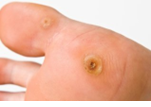
Verrucae are non-serious warts that appear anywhere on the feet, usually the soles. Verrucae are caused by a virus and are picked up through contamination, and so they are common among those who often use communal areas such as swimming pools, gyms, hotels etc. Most people will have a verruca in their lifetime, especially as children, but they tend to go away on their own. Verrucae picked up in adults can take months or even years to clear. However, a chiropodist/podiatrist can apply topical agents to kill of the verruca.
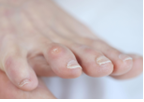
Corns are another common foot problem that we see everyday in the clinic. Corns can occur on anyone of any age and the main cause is the structure of the foot or poor-fitting footwear. We are more likely to experience corns as we get older because as we age our foot structure can change, leading to changes in pressure points on our feet when we walk. There are many different types of corns such as hard and soft corn, as well as neurovascular corns which can be painful and bleed profusely. The chiropodist/podiatrist will remove corns easily and painlessly which will give great relief.

